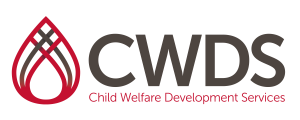CWDS Curriculum
Personal Safety for Child Welfare Social Workers: Practical Steps to Safety
Level: Advanced Practice – Lineworker
Credits: 6
Intended Audience: New and current child welfare personnel who perform job tasks involving direct client interaction
Intended Objectives:
- To describe what is meant by violence in the workplace
- Using case vignettes, to identify and describe three risk factors for child welfare workers and articulate practical steps which the worker could take to reduce the identified risks
- To demonstrate one physical response to a physical attack
- To share with a supervisor their personal safety plan
Topics Include:
- Historical perspective of violence in our society
- Violence in the workplace
- Violence in child welfare practice
- Prediction and risk factors for violent behavior
- Appropriate and inappropriate responses to violence
- Personal safety techniques
- Transfer of learning tools
CalSWEC Competencies Addressed:
2.7 While incorporating knowledge of individual, family, and cultural dynamics, the student recognizes signs and symptoms of substance abuse in children and adults and is able to assess its impact.
2.16 Student understands and can appropriately utilize authority and power in professional relationships.
2.17 Student demonstrates the ability to assess his or her own emotional responses to clients, co-workers, and situations in which the worker’s values are challenged.
3.4 Student demonstrates understanding of the influence of culture on human behavior and family dynamics.
4.8 Student is aware of organizational risk management issues and is able to appropriately resolve potentially harmful situations.
4.10 Student is aware of potential work-related stress factors and is able to develop self-care and other strategies to render these harmless.
7.2 Student demonstrates the ability to recognize potential for violence, suicide,and other potentially harmful behaviors.
Posted In:Worker Retention



